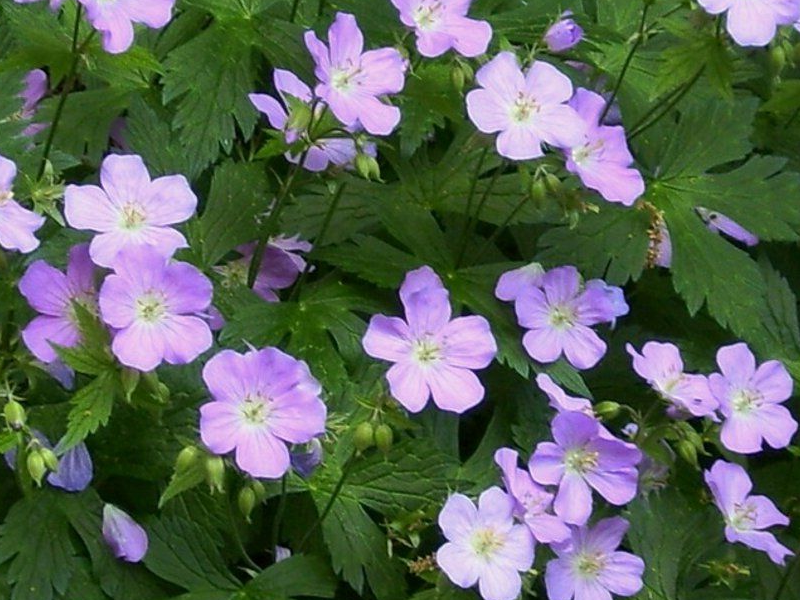Cranesbill Geranium
Geranium maculatum
Click here to download a PDF of this plant information page (for printing).

Sun Exposure: Sun, Part Sun
Season of Interest: Spring, Summer, Fall
Bloom Time: May - OCtober
Bloom Color: Pink to Purple
Height: 14 to 18 in.
Spread: 14 to 18 in.
Spacing: 20 in.
Water Needs: Average
Maintenance: Very little
Soil Type: Clay, Loam, Sandy
Soil pH: Acidic, Neutral
Soil Drainage: Well drained
Pests: Slugs (Deer and Rabbit resistant)
Diseases: None
Wildlife: Bees, Butterflies, Birds

Description:
The bright pink/lavender/purple flowers of Cranesbill Geranium are welcome sight in the spring and continue sporadically through the summer into fall. And this woodland wildflower retains its attractive foliage all season long. These plants are long-lived and expand to form an attractive clump that also work well as a groundcover. As woodland native, Geranium maculatum does prefer shade, but it will grow in full sun in a rich soil that does not dry out completely. Other common names include spotted and wood geranium. Wild geranium is a larval host plant for the leafmining moth Parectopa geraniella, and the White-Marked Tussock moth Orgyia leucostigma. For more information see:
plants.ces.ncsu.edu/plants/geranium-maculatum
Care and Growing Tips:
Cranesbill Geranium does well in sun or shade. That said, it is important to match proper watering with sun exposure. In hot, sunny conditions, the plant will do best if it receives sufficient watering. With ample water, you'll be able to enjoy beautiful foliage all season long at their best colors.
Wild geranium are hardy to USDA zones 3 through 8. In addition, Geranium maculatum also tolerate a wide range of humidity. But, they prefer moderate humidity. It is best to water them in the morning. They are not overly picky about soil. In fact, they can tolerate poor soils.
This plant does not need fertilizer unless you have very poor soil. It grows best is soils high in organic matter. As such, amending with compost and adding a layer every season helps improve the quality of your soil. If you happen to have soil that's extremely low in nutrients, it will be a good idea to apply a balanced slow-release fertilizer early in the spring.
br>Wild Geraniums are fairly low maintenance, and they don't need a lot of pruning. It is not necessary to deadhead this plant. Interestingly, a month or so after blooming, you'll see seed pods develop. These seed capsules somewhat resemble the head of a crane and its long beak. After the plant flowers in hot humid conditions, you may notice the older leaves turn yellow and deteriorate. If this happens, cut them back to simulate new growth.